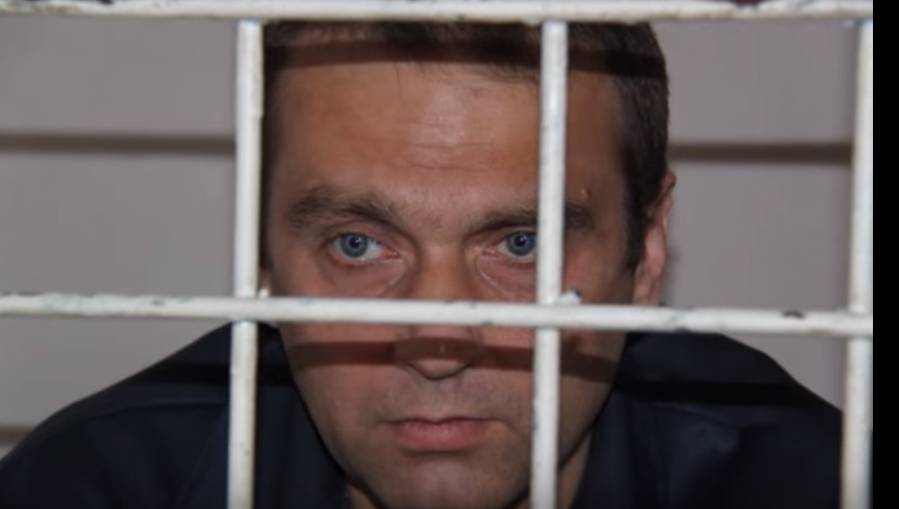Tortured & Almost Certainly Innocent Ukrainian Life Prisoner Dies Without Justice

Oleksandr Rafalsky has died in a Ukrainian prison, let down to the end by Ukraine’s justice system and by the leaders who came to power following Euromaidan. He had spent 15 years in prison despite the lack of any evidence or motive to justify his life sentence and serious grounds for believing that any confessions in the case had been extracted through torture.
The Penitentiary Service has confirmed that the 46-year-old was found unconscious in the early hours of Oct 20. Doctors were called, but were unable to revive him. The results of an autopsy are now awaited.
Rafalsky’s case is widely known among international bodies monitoring the likely use of torture, as well as by rights NGOs. His conviction was among the 10 most dubious cited in calls on parliamentarians to at long last adopt draft bill №2033а. This bill would provide life prisoners whose sentences were based on testimony extracted through torture or similar the chance for a judicial review. No guarantees of release, no easy ‘pardon’, simply the chance of justice, of a proper assessment of the case.
Rafalsky in June 2001 had just turned 30. He was involved in business with his parents, who were building a shopping centre in Tetiyiv [Kyiv oblast]. Rafalsky had started receiving phone calls, threatening him and telling him to leave Tetiyiv. He had his car tyres slashed and then the car itself was stolen.
Two months before Rafalsky’s arrest, four bodies and severed hands were discovered in a field, then a little later bodies were found.
The prosecution claimed to have established the identity of the four people. They asserted that the four men arrested had dismembered them in the construction site where the shopping centre was to be built. There were no traces at all to back this, and the other problems with this version were even greater. The people they named did not correspond to the gruesome find. For example, two of the women allegedly murdered had had their appendix out, however none of the bodies did. The forensic scientists had said that one of the victims was a young boy, yet the prosecution identified him as a 38-year-old man. There are witnesses who have confirmed seeing one of the victims two years after her alleged murder.
The prosecutors stuck to their story regardless. Rights activists who were following the case believe that the plan was to put Rafalsky behind bars and keep him there. After his arrest, his mother came under serious pressure to sell the location, with the argument presented being that nobody would want it because of the murders whose link with the place had never been proven.
On June 13, 2001 the police appeared at Rafalsky’s home. No arrest warrant was provided, nor any explanation. He was held without any registration of the detention for 12 days, until June 25. Not only were no charges laid, but for part of that period he was held in a temporary holding centre for vagrants. The police, who had detained him in his own home, claimed him to be an ‘unidentified person’.
After his first encounter with these officers, he needed to be taken to hospital where two doctors found an injury to the head and multiples injuries to the back
He was constantly moved about, and given no access to his lawyer or family. Rafalsky was only informed on June 25 that he had been detained on suspicion of murder. He was brought before a court only the next day, and convicted of the murders on June 30, 2004.
No real investigation was ever carried out although there is a forensic report from July 19, 2001 which said it could not exclude the use of torture and detailed considerable number of injuries.
In September 2001 the Prosecutor General’s Office refused to initiate proceedings, claiming that the only time Rafalsky had been manhandled was to restrain him when he allegedly tried to flee on June 13. He was supposed to have tried to get away through a ventilation hole which a human being could not have got through, suggesting that the PGO had not even checked the police story.
Rafalsky’s own account of the torture methods applied is harrowing to listen to. He was beaten, had electric shocks applied, was shot with blank bullets and forced to dig his own grave in mock executions.
The judge ignored the compelling evidence of torture, the retractions of testimony by those defendants who had signed what was demanded, and even the evidence that at least one of the alleged victims was still alive.
Human rights activist Andriy Didenko reports that Rafalsky had been held in the Kyiv SIZO [remand prison] for a year and a half in connection with criminal proceedings over torture and falsifications where Rafalsky had victim status.
One of the four men convicted of these murders – Viacheslav Baranovsky – is alive. Volodymyr Kharchenko and Stepan Chernak died some time ago.
Ukraine still has a chance to put an end to the injustice perpetrated against one man in this case and against others.
See for example: Maxim Orlov - zero evidence but sentenced to life for good statistics
Ukrainian (in)justice: Panasenko serving a life sentence as they needed to convict somebody
There are others whose life sentences also arouse grave doubts, and there is no excuse for any further delay in giving imprisoned men the chance of justice.





